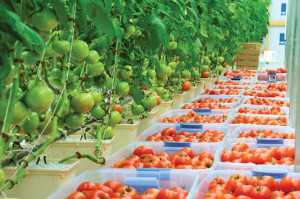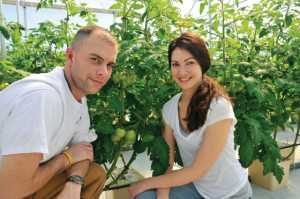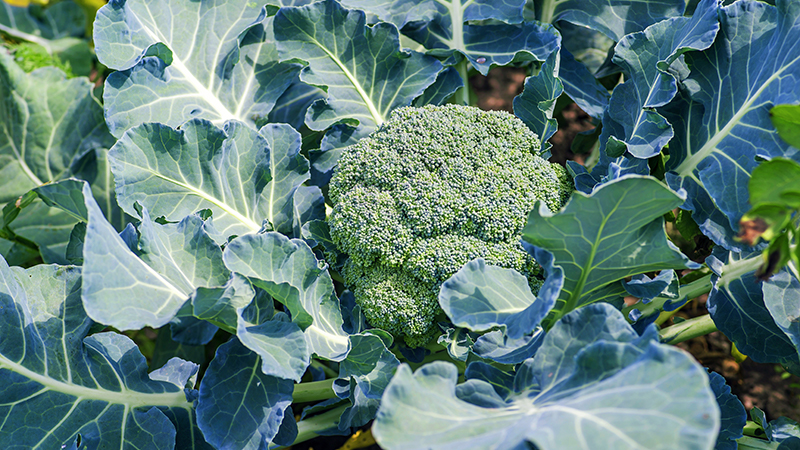Tips On Breaking Into The Greenhouse Vegetable Market

The greenhouse vegetable market is poised to grow, thanks to consumers’ increasing desire for fresh produce. Often, however, growers who get into this business have trouble sustaining their enterprise. St Bethany Fresh in Pontotoc, MS, though, figured out how to make it all work.
Owner Steve Hale, with the help of his children and St Bethany fresh namesakes Stephen Hale and Leah Beth Murphy, opened a 24,000-square-foot greenhouse growing Geronimo tomatoes, long English seedless cucumbers, and mini English seedless cucumbers. Within a year of opening, their produce has been featured in Whole Foods, supplying 26 stores in the Southeastern U.S.
Hale says that his success wasn’t due to luck, but hard work and perseverance. “People tell you not to get into the business unless you have a place to sell your product, but it’s kind of ridiculous because no one will contract with someone that hasn’t proven themselves as a reliable grower,” said Hale. “We had to plant our crop, grow it, give away about three-quarters of what we were growing in the beginning until we started developing a market.”
Advice On Entering The Market

St Bethany Fresh supplies Geronimo tomatoes as well as long English seedless cucumbers and mini English seedless cucumbers to Whole Foods stores in the Southeastern U.S.
Steve Hale, owner of St Bethany Fresh, offers some advice to growers seeking to enter the greenhouse vegetable market:
Plan your market ahead of time. “Talk to as many people as you can,” he says, “and let them know what you’re getting ready to do. But, no one’s going to commit to buying anything from you — initially.”
Negotiate a price that is going to be profitable. “Not break even, but profitable for you or you’re not going to be around very long doing this,” Hale explains. Remember how expensive it is to get into this business, he adds.Start out small. Hale advises people to not quit their day jobs and make sure they have the capital to sustainthe business.
Consistently supply quality product. As quality is everything, make sure you deliver your best product and customers will be satisfied, he says.
“Once you produce a quality product, it’s not that hard to sell it to those who are actually looking for locally grown, fresh produce,” adds Hale.
Location. Location. Location. “If you’re right outside a metropolitan area, you’re probably in a really good place, he says. “If you’re in the middle of the Mississippi Delta, it’s probably not a great place, unless you’re starting out really small.”
A Produce Advocate

The children of St Bethany Fresh owner, Steve Hale, Stephen and Leah Beth Murphy, helped their father open a 24,000 square-foot greenhouse.
Kimberly Morgan, assistant professor of agriculture economics at Mississippi State University, says St Bethany Fresh’s success can also be attributed to the willingness of the Hale family to be advocates for their product and promote their tomatoes at grower association meetings and with local TV spots.
“They did not fall into the trap of assuming only one market channel would want to buy from them. Instead they got very creative and pursued every and any potential sales outlet — an important reminder to growers looking to step beyond the farm gate to establish a direct marketing plan,” said Morgan.
Hale acknowledges the need to be the face of their product. However, he says, “I don’t consider myself a salesperson. I consider myself a farmer.” He adds that getting started as a farmer, though, wasn’t easy. The need for startup money and capital to keep the operation stable for the first few years is a critical need until there is a market for the crop.
Hale realizes that his story of success is unusual among greenhouse tomato growers and that typically six or seven out of 10 new growers don’t make it because they lack the capital or they don’t have a market for their product.
In spite of these odds, Hale sees a lot of potential in this industry and in the market. “We’ve got a place for our [produce] to go this year, which we didn’t last year,” said Hale. “I’m just thankful and humble that companies like Whole Foods are interested in our product.”










